Encouraging wildlife into your garden not only benefits the wildlife but also helps to maintain the balance of the ecosystem it supports. This results in less issues with pests over the longer term. From birds eating aphids and caterpillars to beetles and frogs eating slugs, increasing the variety of wildlife visiting your garden can have a wide range of benefits.
There are several ways to encourage wildlife to visit your garden, and small changes can make a surprisingly quick difference. Read on for some of the changes I have made.
Water
Adding water to a garden is guaranteed to encourage more wildlife. From birds using the water to drink and wash, to hedgehogs and other mammals as well as insects and amphibians. There is something so mesmerising about watching damselflies and dragonflies visiting a pond on a warm summers day.
Encouraging frogs can help to control the slug population and have widespread benefits. Many pollinators also need water with bees and wasps often to be seen at the shallow edges of ponds and puddles.
In small gardens consider adding a container pond, water bowl or bird bath. There are many made for purpose containers available these days or use any attractive container that you already have. Old tin baths and Belfast sinks make great micro ponds.
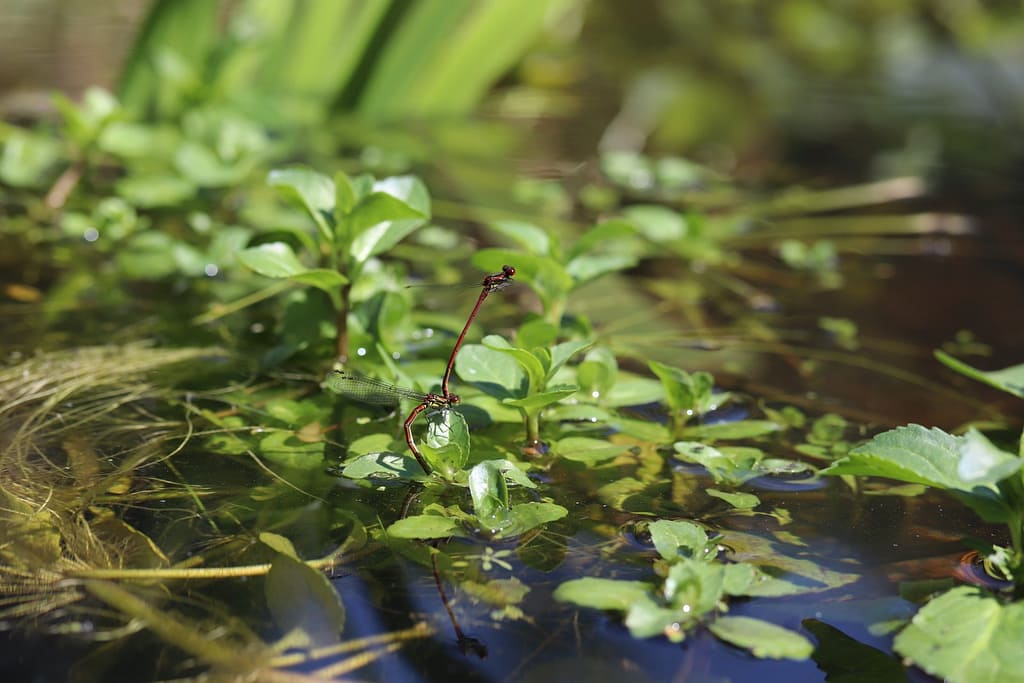
If you have more space and can add a bigger pond consider creating one that offers both shallow and deeper water to encourage different wildlife. For more natural shapes a pond liner, the edges of which can be hidden with stones or planting, is the best option. Preformed ponds also offer a quick and easy option.
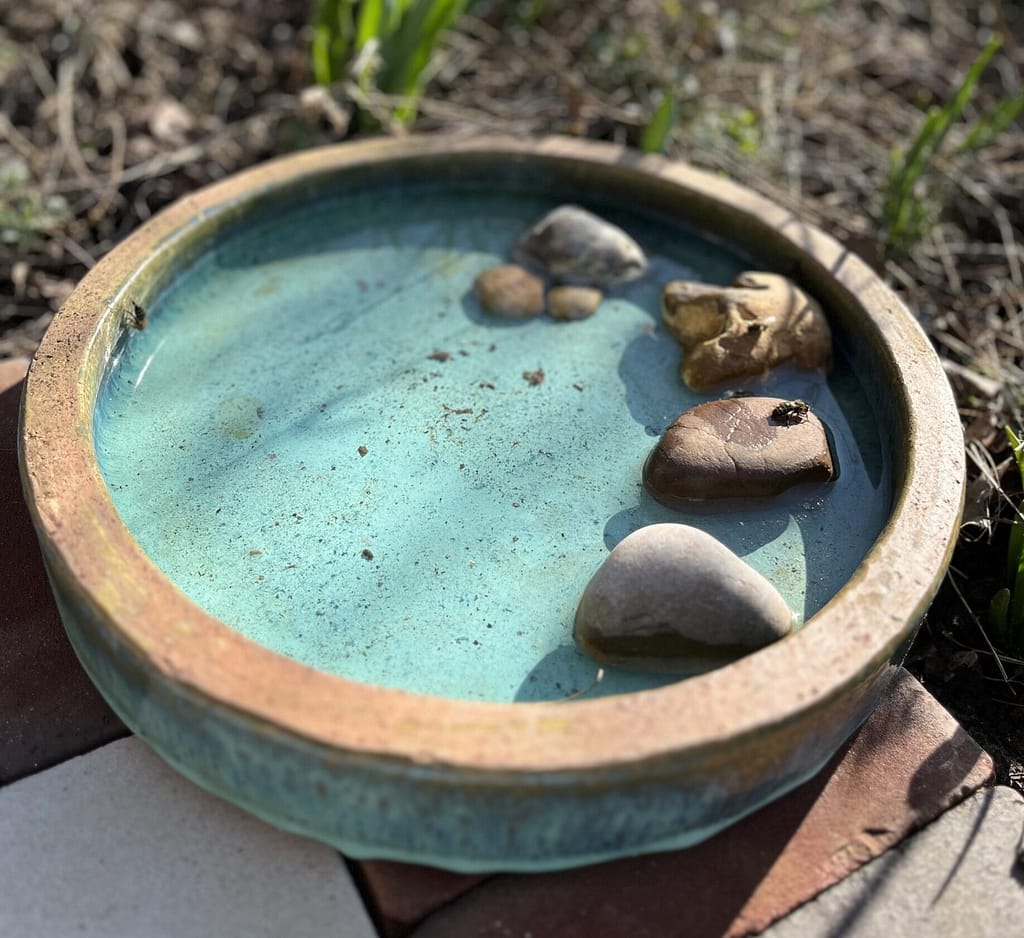
Or if you are really short on space even the smallest courtyard garden can include a birdbath or simple saucer of water.
Resisting over-tidying / leaving shelter over winter
The easiest way to welcome more wildlife to your garden is simply to be less tidy. This is a solution which I am always happy to embrace as I am always short on time! Leaf litter and longer grass provides vital shelter for many insects and other animals. This is particularly important in winter when leaving leaf piles and dead stems will provide overwintering habitat for many insects.

Leaving perennials and grasses to stand through the winter and only chopping them down as spring approaches is increasingly encouraged. It provides winter habitat for many insects and animals, and provides seedheads to feed hungry birds. It also adds interest to the garden through the bleaker months. Frost and low sunlight highlight the structure and form of the seedheads and stems beautifully.
Leaving grass longer, perhaps just in certain areas or corners if the striped lawn is a central feature of your garden, can be hugely beneficial.
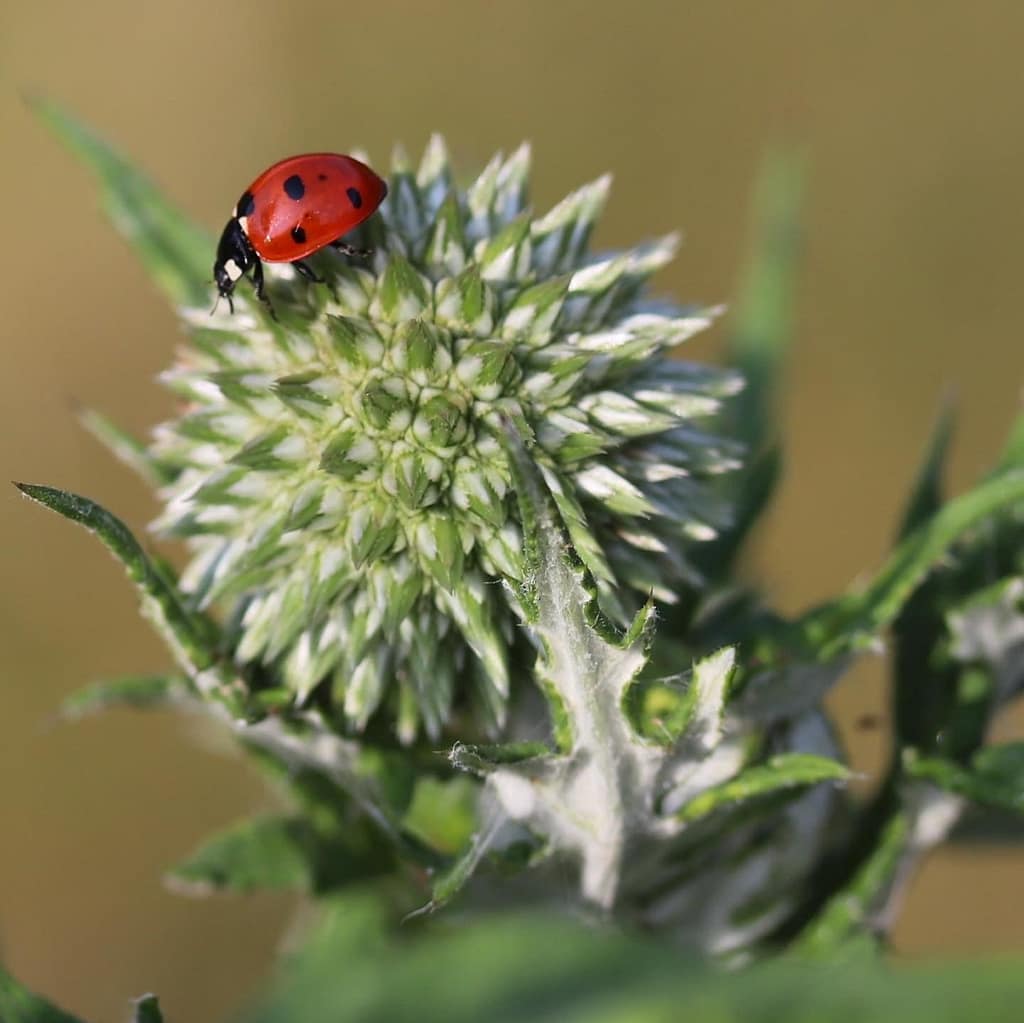
Leaving perennials to stand over winter has hugely increased the number of Ladybirds in my garden, which I appreciate as they eat aphids.
Providing shelter for wildlife can take many forms, from adding trees and shrubs to creating log piles and compost heaps.
Trees provide shelter for many birds and insect species and from a design perspective even the smallest gardens can accommodate a small tree. Consider crab apples such as Malus ‘Evereste’ which offers spring blossom for pollinators and winter fruits for the birds. Amelanchier lamarckii is another wildlife friendly small tree with spring blossom and summer fruits which attract birds,. For smaller gardens consider Amelanchier alnifolia ‘Obelisk’ which has a narrower habit as it’s name suggests.
Log piles
Stacking logs or cuttings to provide shelter for insects and animals can also add interest to your garden.
Log piles provide crucial habitat and food for a variety of insects. If you have branches or whole trees taken down in your garden consider leaving some in a pile. Or for a more designed look, which can act as a useful divider if you have plenty of logs, a log wall can become an attractive feature.
If you have larger logs or branches consider part-burying them in the ground as some insect larvae, such as Stag beetle larvae, live and feed on rotting wood below ground.
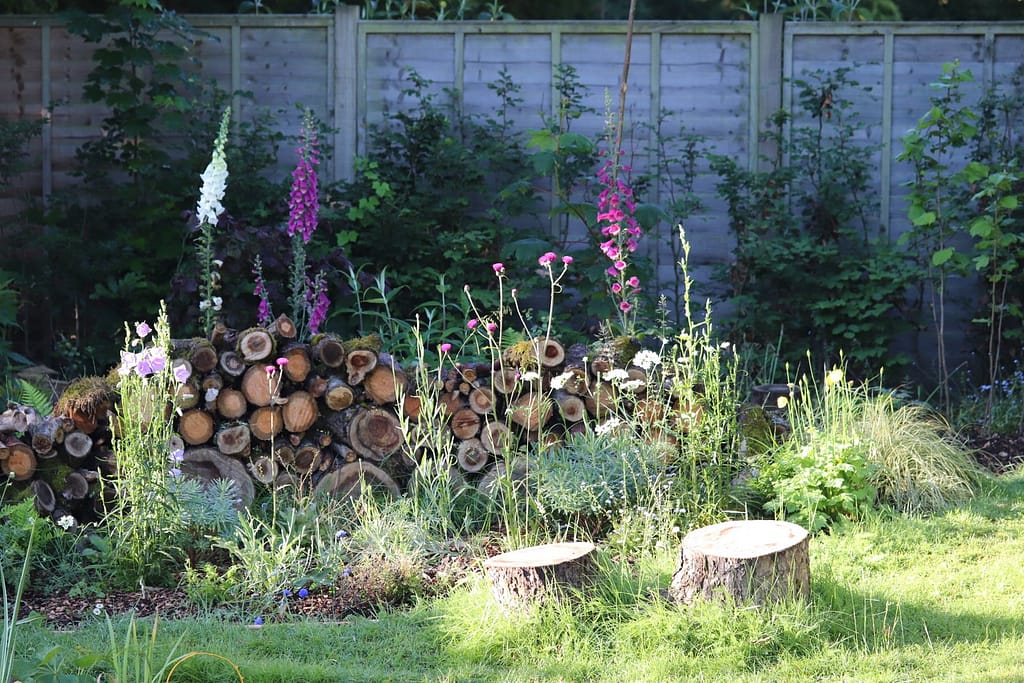
My log wall inspired by Nigel Dunett
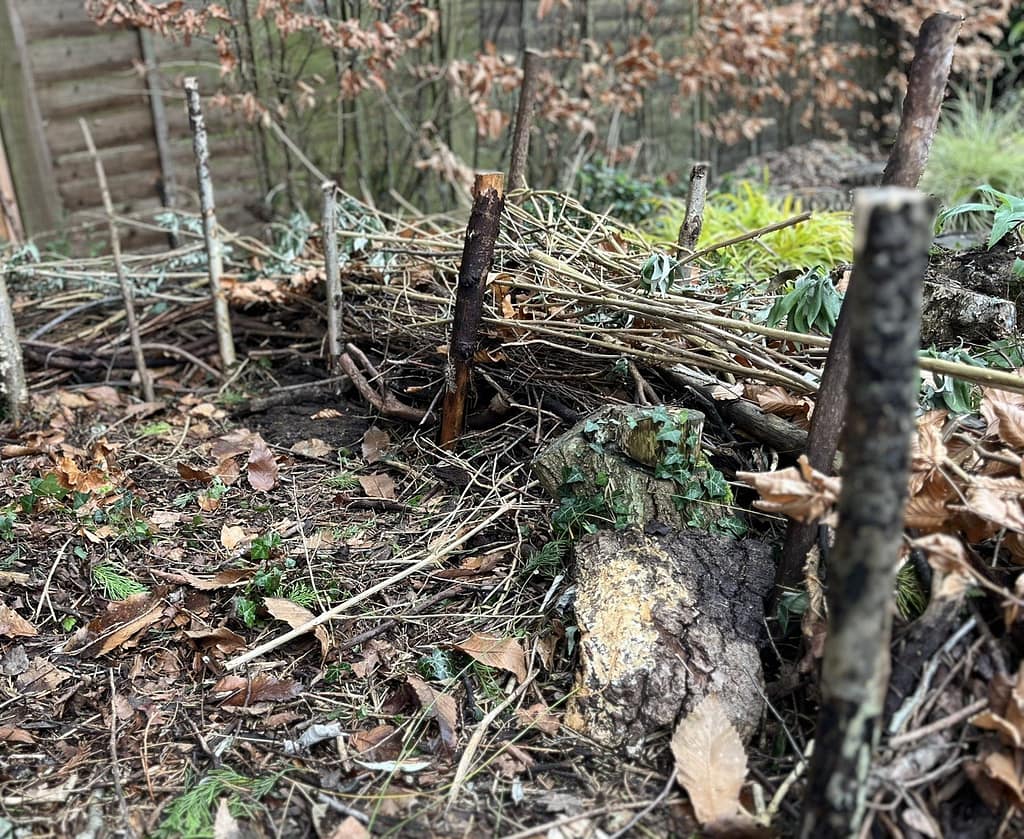
A dead hedge is another great option to provide shelter and habitat. Loose pruning’s are simply piled between a series of stakes to form a ‘hedge’. This also provides a useful way of getting rid of waste material. Over time it will gradually rot down and new material can be added to the top.
Beetles and small mammals such as hedgehogs will use the shelter provided by the hedge.
Compost heap
If you have the space a compost heap is an essential feature in any garden as far as I am concerned. As well as recycling waste material and boosting soil health it also provides shelter and food for a range of animals. While the plastic bins may be the simplest solution in smaller gardens, a simple wooden crate made from unwanted pallet wood is both cheap and wildlife friendly.
Food
Attracting wildlife to your garden requires not only shelter and habitat but also food.
Think about incorporating pollinator friendly flowers into your planting. Generally these are single blooms that allow pollinators to access the nectar. Also a lot of purple flowers are favourite with pollinators. Plants that flower throughout the seasons are also important to keep insects going through the leaner months.
Consider adding perennials such as Hellebores which flower in winter and shrubs such as Mahonia x media ‘Winter Sun’.
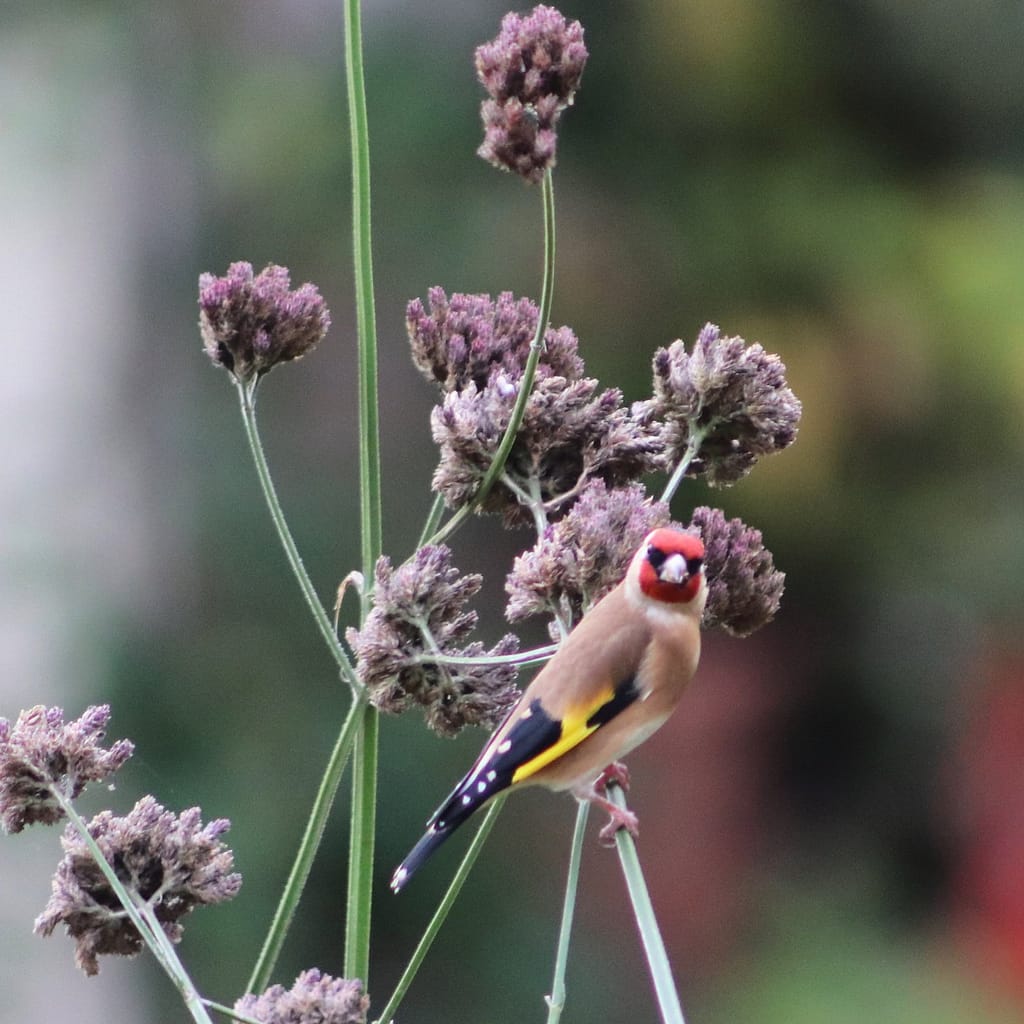
Shrubs and trees that provide berries such as Pyracantha help to feed birds through winter, as well as leaving seed heads standing.
A Goldfinch attracted to the garden by Verbena bonariensis seedheads. I leave some of these over winter for the birds. Be careful though because if it likes your soil it will self-sow readily. It is easy enough to weed out the seedlings though, and I love to see the birds feasting on them
More information
The RHS has lots of information on its website about gardening for wildlife Wildlife Gardening / RHS Gardening / RHS and the Wildlife Trust has lots of useful How to Guides Wildlife gardening | The Wildlife Trusts
If you would like help redesigning your garden to be more wildlife friendly or an advice session to discuss the changes you could make please get in touch Contact – Jo Chertkow Garden Design

